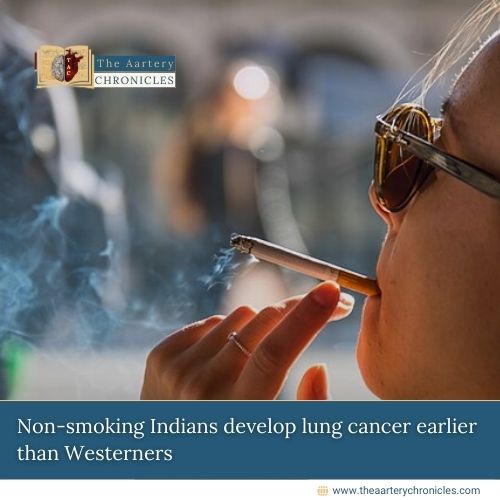
Non-smoking Indians develop lung cancer earlier than Westerners
A recent review in The Lancet, a prestigious medical journal, highlights the distinct characteristics of lung cancer patients in India. According to studies, lung cancer tends to present about a decade earlier in India compared to Western countries, with the average age at diagnosis ranging from 54 to 70 years.
Overview of Lung Cancer in Southeast Asia
The article, “Uniqueness of Lung Cancer in Southeast Asia,” was authored by a team of doctors primarily from Tata Memorial Centre in Mumbai. It reveals that lung cancer was the third most diagnosed cancer in Southeast Asia in 2020, with 1.85 million new cases, accounting for 7.8% of all cancer cases. However, it remains the leading cause of cancer-related deaths in the region, responsible for 1.66 million deaths, or 10.9% of all cancer fatalities. Globally, there were 2.2 million new cases (11.6%) and 1.7 million deaths (18%) due to lung cancer. In India specifically, lung cancer accounted for 72,510 new cases (5.8%) and 66,279 deaths (7.8%) annually.
Non-Smokers and Lung Cancer
Dr. Kumar Prabash from Tata Medical Centre’s medical oncology department, one of the authors, noted that over 50% of lung cancer patients in India are non-smokers. The study identified key risk factors for lung cancer in non-smokers, including air pollution (particularly particulate matter PM2.5), occupational exposure to substances like asbestos, chromium, cadmium, arsenic, and coal, as well as second-hand smoke exposure at home. Genetic susceptibility, hormonal status, and pre-existing lung diseases may also contribute to the rising incidence of lung cancer among non-smokers.
Comparison with the West
Dr. Prabash highlighted that the incidence rate of lung cancer in the US is 30 per 1,000 people, compared to 6 per 1,000 in India. Despite the lower rate, India’s large population results in a significant number of lung cancer cases. Additionally, the high prevalence of tuberculosis (TB) in India complicates lung cancer diagnosis, as the two conditions can present similarly.
Challenges and Recommendations
The review emphasized the difficulties in accessing newer treatment modalities and drugs, which are often developed abroad, increasing the cost for Indian patients. Early detection and treatment initiation are critical challenges, with only about 5% of lung cancer patients in India seeking timely surgical intervention. Dr. Prabash stressed the need to increase this number to at least 20%, like in Western countries, to improve treatment outcomes.
Source: Inputs from various media Sources










